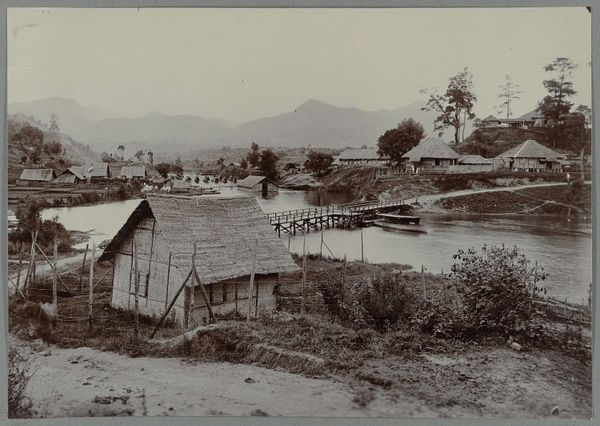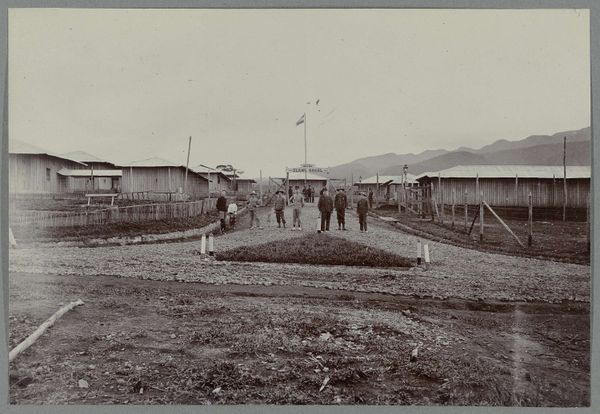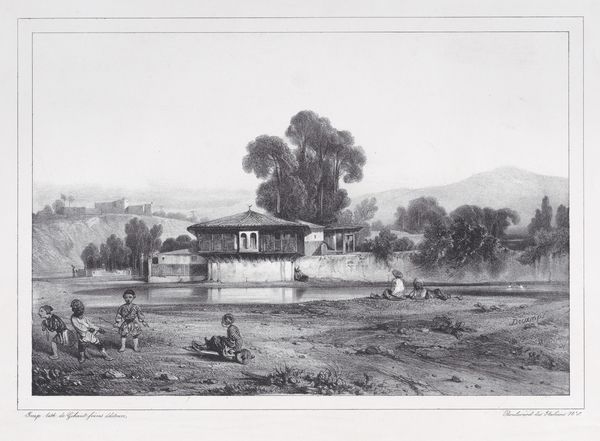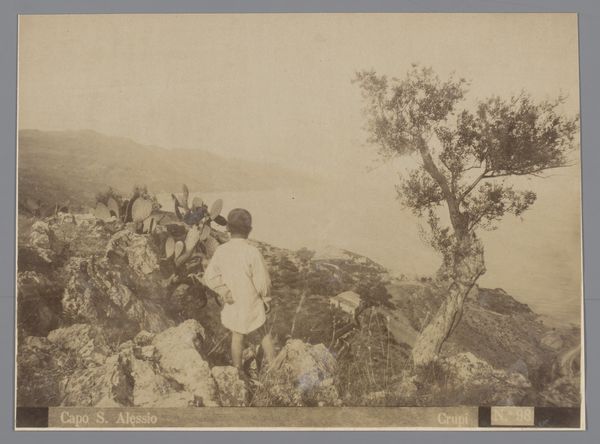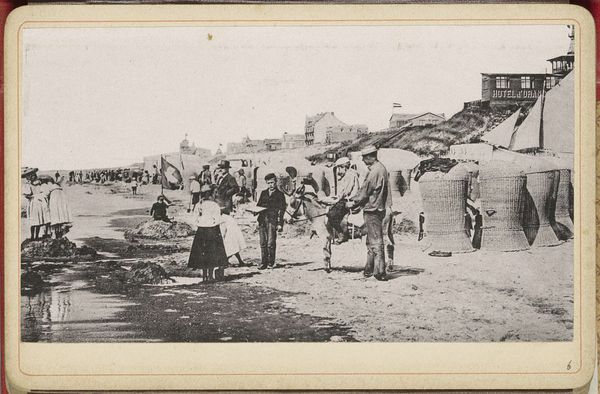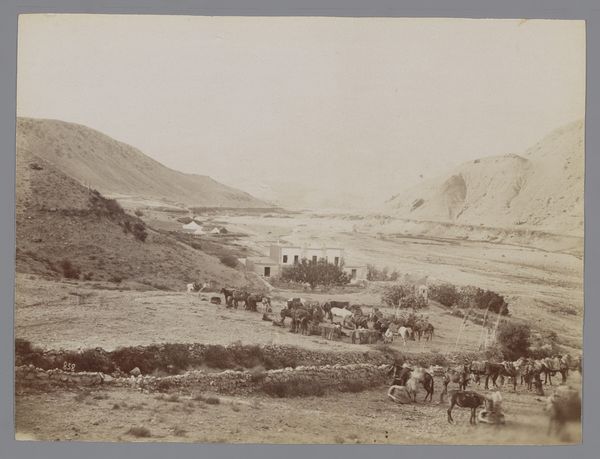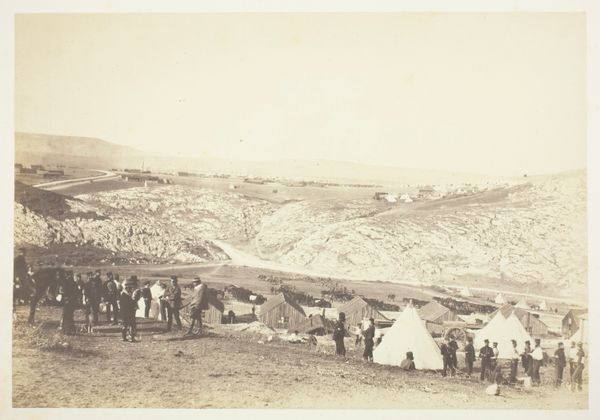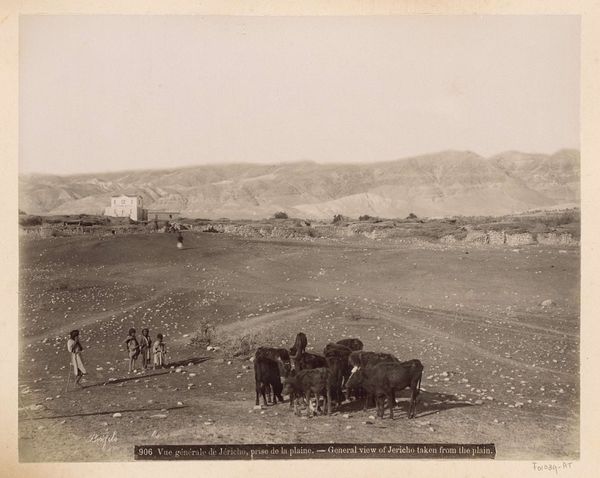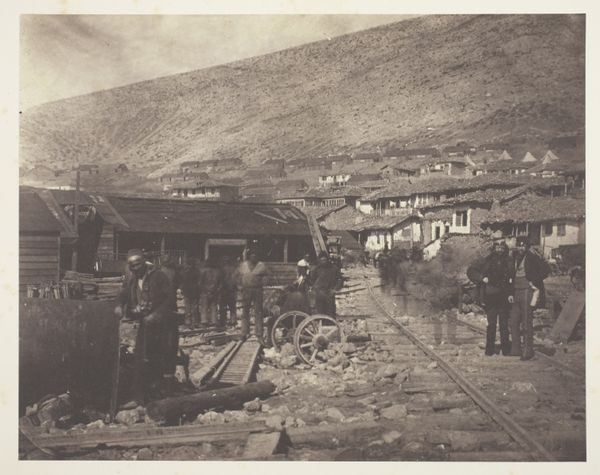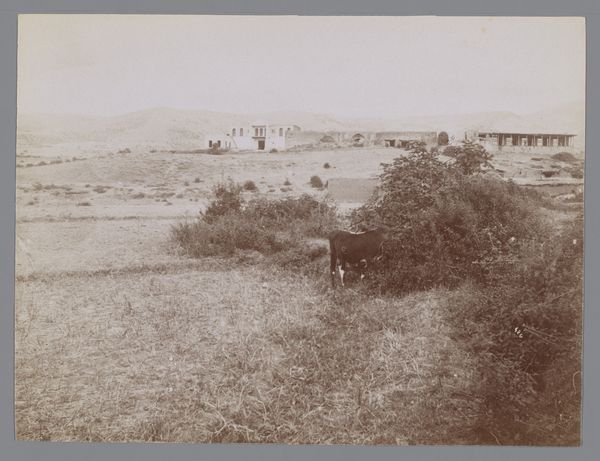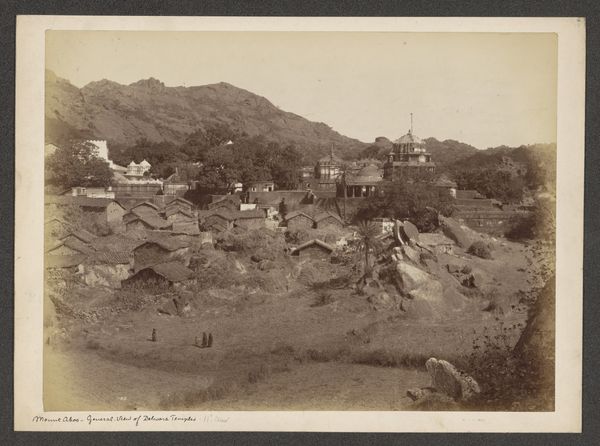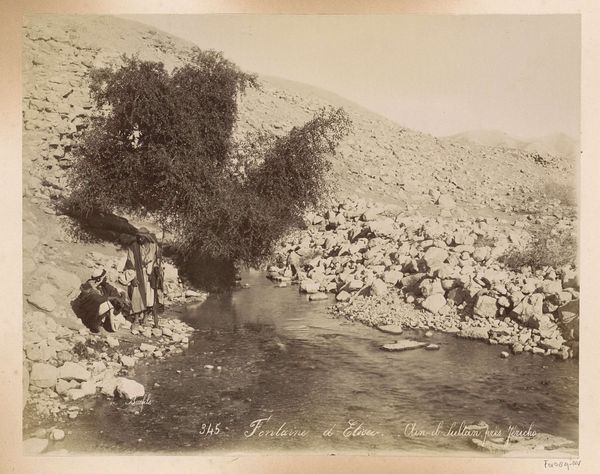
gelatin-silver-print, print, photography, gelatin-silver-print
#
portrait
#
gelatin-silver-print
#
narrative-art
# print
#
indigenism
#
street-photography
#
photography
#
photojournalism
#
group-portraits
#
orientalism
#
gelatin-silver-print
#
history-painting
#
realism
Dimensions: 9 x 13 x 1 1/2in. (22.9 x 33 x 3.8cm)
Copyright: Public Domain
Editor: This photograph, part of an album dating from the 19th to 20th century, captures what seems to be an execution scene in Kowloon City, China. It’s stark, undeniably gruesome. The image features a row of decapitated bodies and a line of observing figures. What are your initial thoughts, considering the context of its creation and display? Curator: My immediate reaction is to consider the complex power dynamics inherent in this image. It presents a very clear visual statement about colonial authority. Notice the contrast: a row of figures in Western attire, seemingly observing the execution of the Chinese "pirates," as they are described. This staged image was clearly produced for a Western audience, showcasing imperial power. What is being omitted from the photograph, and from the description in the corner, is equally important as what has been displayed. What sociopolitical contexts enabled the capturing and sharing of this disturbing image as documentation, entertainment, or "proof" of colonialism's civilizing influence? Editor: So, beyond just documenting an event, this image functions as a form of propaganda, shaping perceptions of power and justification for colonial actions? Curator: Exactly. Think about how photographic albums like this would have circulated. They weren't neutral records; they were carefully curated narratives used to solidify particular ideologies. Images like these further Othered non-Western people and places, shaping perspectives for an insular readership. These images construct how non-Western individuals can be made subject to legal exception at the hand of colonizing authorities. In this case, the Western narrative suggests their methods are necessary and their power unquestionable. How does this photograph challenge or confirm any pre-conceived ideas about the era for you? Editor: I hadn’t considered it that way. The photograph is indeed evidence of the complex social structures underpinning colonial actions, serving less as historical record and more as documentation of control and exploitation. Curator: Indeed. Photography, even seemingly objective photography, operates as an agent for historical narrative construction. It shows how photographic circulation operates within and often cements social power dynamics. Editor: It is a challenging image to engage with, but it provides new insights into my preconceptions of 19th and 20th century attitudes to colonization.
Comments
No comments
Be the first to comment and join the conversation on the ultimate creative platform.
